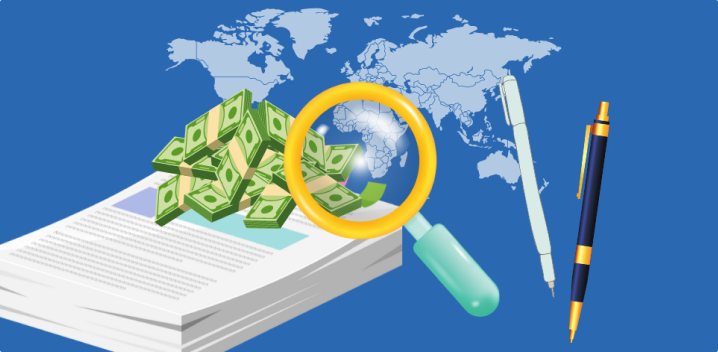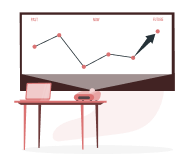Options And Futures: Understand The Functioning, Types and Other Factors
5paisa Research Team
Last Updated: 12 Mar, 2024 06:12 PM IST

Content
- Introduction
- What is Future Option?
- Different types of future options:-
- How does a call future option work?
- What is a put option on the futures?
- How Options On Futures Work
- Example of Options on Futures
- Further Considerations for Options on Futures
Introduction
Futures and options are both significant types of stock derivatives that are traded in the share market. Future option or Option Futures meaning can be quite confusing for a lot of people. Options Futures and other derivatives are traded in the share market. A future is a contract that is legally binding and is put to use when buying or selling a financial instrument or an underlying commodity or asset at a predetermined price on a particular date.
On the other hand, an Options contract gives an opportunity and the right but does not put the investor under any obligation of buying or selling at a particular date or price, which is known as the expiry date.
More About Derivatives Trading Basics
- test123
- Guidance to Futures and Options Trading in the Stock Market
- Covered Call
- What Is Put Writing?
- Delta Hedging
- Credit Spread
- Currency Options
- Options Hedging Strategy
- Options And Futures: Understand The Functioning, Types and Other Factors
- Options Trading for Beginners: A Comprehensive Guide For You
- Best Options Trading Courses: Things To Know About
- Short Strangle: How Does It Work In 2023
- Butterfly Option Strategy
- Options Selling
- What Are Stock Options: A Complete Guide 2023
- What is the Call and Put Option?
- What are Futures and Options?
- What is Implied Volatility?
- What is Open Interest in Options?
- What is Strike Price?
- What Is a Call Option?
- What is a Put Option?
- How to Choose Best Stocks for Option Trading?
- Options Trading Tips
- How to Trade Options?
- Types of Options
- Understanding Various Options Trading Strategies
- What are Options?
- What is Put-Call Ratio?
- What is Margin Money?
- What is an Open Interest?
- Call Options Basics and How it Works?
- The Simplest Guide to Futures Pricing Formula
- What are Bullish Option Strategies?
- What are the Various Types of Derivatives?
- What is Bermuda Option?
- What are Swaps Derivatives?
- What is an Index Call? Overview of Index Call Options
- What is Forward Market?
- What is Option Volatility & Pricing Strategies for Advanced Trading
- What is Settlement Procedure?
- What is Margin Funding?
- Derivatives Trading in India
- Difference Between Equity and Derivatives
- What are Currency Derivatives?
- Derivatives Advantages & Disadvantages
- What are Forward Contracts?
- How to Trade in Futures and Options?
- What is Meant by Futures in Trading?
- Stock Index Futures
- Stocks vs Futures
- What Are Exchange Traded Derivatives?
- Futures Contract: Meaning, Definition, Pros & Cons
- What is Options Trading?
- What is Derivative Trading?
- What are Derivatives?
- Straddle Strategy
- Options Strategies
- Hedging Strategy
- Difference Between Options and Futures Read More
Disclaimer: Investment in securities market are subject to market risks, read all the related documents carefully before investing. For detailed disclaimer please Click here.
Frequently Asked Questions
Future contracts are standardized contracts that can be bought and sold on an exchange by the investors. These contracts allow investors or traders to trade in an underlying commodity or underlying asset at a predetermined price on a pre or prior-specified date, i.e. the expiration date for the options.
Both options and futures have their own pros and cons. One advantage of options over futures is obvious, which is that an options contract gives the buyer the right and doesn't put them under an obligation to buying or selling a financial instrument or an asset at a fixed and predetermined price on or before the predetermined future month.
Earlier, in 2015, the limit was Rs.5 lakh. At present, SEBI securities and the exchange board of India have introduced stocks for options trading to be set at Rs. 7.5 lakh. Therefore, the lot size is not fixed and keeps changing with the change in the stock price.
You can begin trading in F and O by opening a trading account or derivative trading account. With this account, you can start trading from anywhere in F and O.
Futures and options are two derivatives that are used by traders to buy or sell an asset at a pre-decided price. The profits are made when the price rises when traders are in a buy position and when in a sell position, a fall in price becomes beneficial.
Futures are better as they have several advantages over options. This is because they are often easier to understand and value, are more liquid and have a higher margin use. However, it is best to know all risks involved first before trading futures.
When it comes to being safer, options are considered safer than futures. Futures are riskier as they are directly involved in volatility and asset prices. On the other hand, options react in a different manner to the underlying asset price movement and allow a relatively long time to curtain and manoeuvre losses.


